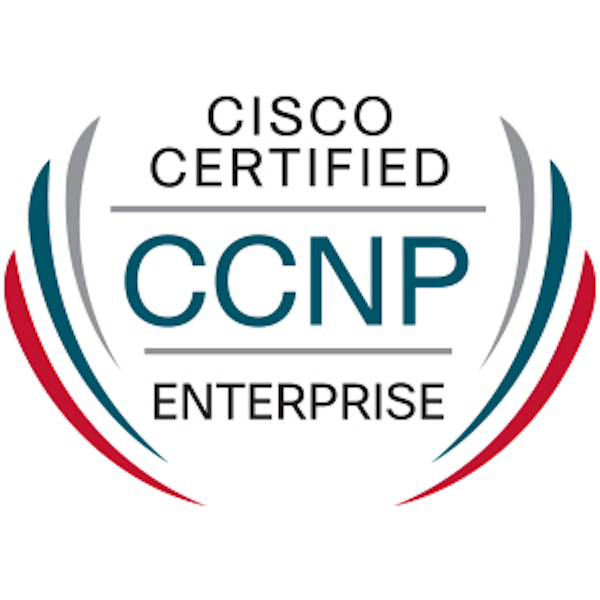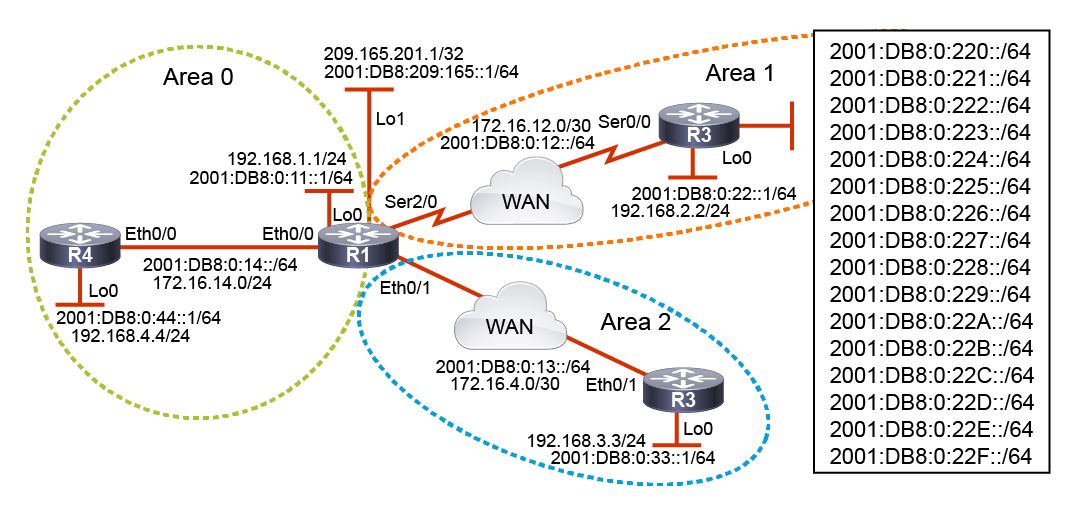CCNP Enterprise ENCOR – Implementing and Operating Cisco Enterprise Network Core Technologies

The Cisco CCNP ENCOR course covers essential networking concepts and technologies, such as Campus LAN design, routing protocols like EIGRP and OSPF, wireless principles, network security, and automation using Cisco DNA Center. It also delves into virtualization, Quality of Service (QoS), and troubleshooting techniques. Throughout the course, students will gain hands-on experience with various tools and protocols, preparing them for the certification exam. By achieving the CCNP ENCOR certification, professionals demonstrate their advanced knowledge and skills in enterprise networking, making them valuable assets to any organization.
Course Objectives
The main objectives of the Implementing and Operating Cisco Enterprise Network Core Technologies (ENCOR) Course are:
- Understand and design Campus LAN architecture.
- Master routing protocols, including EIGRP and OSPF.
- Gain knowledge of wireless principles and deployment options.
- Implement network security measures and infrastructure protection.
- Utilize network virtualization and Quality of Service (QoS) techniques.
- Troubleshoot common network issues effectively.
- Configure and optimize network services, such as NTP and Syslog.
- Explore automation and assurance using Cisco DNA Center.
- Get familiar with software-defined networking solutions like SD-Access and SD-WAN.
- Develop a foundation in network programmability and APIs.
Upon completion of the course, individuals should be able to take Exam 350-401 ENCOR to achieve a CCNP Enterprise Certification.
Course Certification
This course helps you prepare to take the:
CCNP Enterprise Certification Exam 350-401 ENCOR
Course Outline
Module 1: Cisco Enterprise Network Architecture
- Examining Cisco Enterprise Network Architecture
- Cisco Enterprise Architecture Model
Module 2: Campus LAN Design
- Campus LAN Design Fundamentals
- Traditional Multilayer Campus Layer Design
- Campus Distribution Layer Design
Module 3: Switching and Routing
- Understanding Cisco Switching Paths
- Layer Switch Operation
- Implementing Campus LAN Connectivity
- Revisiting VLANs
- Inter-VLAN Routing
- Understanding EIGRP
- Implementing OSPF
- Exploring EBGP
Module 4: Network Redundancy and High Availability
- Building Redundant Switched Topology
- Implementing Network Redundancy
- Cisco Switch High Availability Features
Module 5: Network Address Translation and Virtualization
- Implementing NAT
- Introducing Virtualization Protocols and Techniques
Module 6: Wireless Networking
- Understanding Wireless Principles
- Examining Wireless Deployment Options
- Understanding Wireless Roaming and Location Services
- Examining Wireless AP Operation
- Understanding Wireless Client Authentication
- Troubleshooting Wireless Client Connectivity
Module 7: Multicast and QoS
- Introducing Multicast Protocols
- Introducing QoS
Module 8: Implementing Network Services
- Implementing Network Services
- Understanding Cisco IOS Embedded Event Manager (EEM)
- Using Network Analysis Tools
Module 9: Infrastructure Security
- Implementing Infrastructure Security
- Implementing Secure Access Control
- Understanding Enterprise Network Security Architecture
Module 10: Network Automation and Programmability
- Exploring Automation and Assurance Using Cisco DNA Center
- Examining the Cisco SD-Access Solution
- Understanding the Working Principles of the Cisco SD-WAN Solution
- Understanding the Basics of Python Programming
- Introducing Network Programmability Protocols
- Introducing APIs in Cisco DNA Center and vManage
Lab outline
- Investigate the CAM
- Analyze Cisco Express Forwarding
- Troubleshoot VLAN and Trunk Issues
- Tuning Spanning Tree Protocol (STP) and Configuring Rapid Spanning Tree Protocol (RSTP)
- Configure Multiple Spanning Tree Protocol
- Troubleshoot EtherChannel
- Implement Multi-area OSPF
- Implement OSPF Tuning
- Apply OSPF Optimization
- Implement OSPFv3
- Configure and Verify Single-Homed EBGP
- Implementing Hot Standby Routing Protocol (HSRP)
- Configure Virtual Router Redundancy Protocol (VRRP)
- Implement NAT
- Configure and Verify Virtual Routing and Forwarding (VRF)
- Configure and Verify a Generic Routing Encapsulation (GRE) Tunnel
- Configure Static Virtual Tunnel Interface (VTI) Point-to-Point Tunnels
- Configure Wireless Client Authentication in a Centralized Deployment
- Troubleshoot Wireless Client Connectivity Issues
- Configure Syslog
- Configure and Verify Flexible NetFlow
- Configuring Cisco IOS Embedded Event Manager (EEM)
- Troubleshoot Connectivity and Analyze Traffic with Ping, Traceroute, and Debug
- Configure and Verify Cisco IP SLAs
- Configure Standard and Extended ACLs
- Configure Control Plane Policing
- Implement Local and Server-Based AAA
- Writing and Troubleshooting Python Scripts
- Explore JavaScript Object Notation (JSON) Objects and Scripts in Python
- Use NETCONF Via SSH
- Use RESTCONF with Cisco IOS XE Software
Course Mode
Instructor-Led Remote Live Classroom Training;
Trainers
Trainers are Cisco Official Instructors and certified in other IT technologies, with years of hands-on experience in the industry and in Training.
Lab Topology
For all types of delivery, the Trainee can access real Cisco equipment and systems in our laboratories or directly at the Cisco data centers remotely 24 hours a day. Each participant has access to implement the various configurations thus having a practical and immediate feedback of the theoretical concepts.
Here are some Cisco Labs network topologies available:

Course Details
Course Prerequisites
Knowledge and skills you should have before attending this course:
- Implementation of Enterprise LAN networks
- Basic understanding of Enterprise routing and wireless connectivity
- Basic understanding of Python scripting
The following Cisco courses may help you meet these prerequisites:
Course Duration
5 days
Course Frequency
Course Duration: 5 days (9.00 to 17.00) - Ask for other types of attendance.
Course Date
- CCNP Enterprise ENCOR Course (Intensive Formula) – On request – 9:00 – 17:00
Steps to Enroll
Registration takes place by asking to be contacted from the following link, or by contacting the office at the international number +355 45 301 313 or by sending a request to the email info@hadartraining.com


